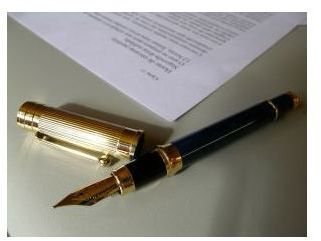Employee Release of Rights to Intellectual Property, with Sample Agreement
Intellectual Property and Employees
In an employer-employee relationship, creative works and the right to use them necessitate the need for employee release of rights to intellectual property. While creative work product produced during the normal scope of employment is covered under work for hire laws, much is left to interpretation. A signed release protects the employer from future legal battles over permissible use, royalties, and other conflicts. An employee release of rights to intellectual property, such as the one linked below, is the equivalent to a bill of sale for physical property.
Download Link: Sample of an Intellectual Property Rights Release
What is Intellectual Property?
Intellectual property is a type of asset developed from the mind. Intellectual property, while intangible, can be expressed through written work or otherwise converted to a tangible form. The concept behind the intellectual property, no matter its method of expression, derives from creative mental processes and is therefore the default property of its creator. The right of ownership to such works is protected by law.
Intellectual property law is the embodiment all of the government statutes that govern protection, sale, and use of copyrighted, trademarked, or patented work. If you have employees creating artistic works like music or written text, software applications, or business processes, you need to understand intellectual property laws. In most cases, you need a signed employee release of rights to intellectual property in order to demonstrate your ownership of the copyrights, trademarks, or patents involved in these works.
The Growth of Intellectual Property Law

Intellectual property laws are not a new phenomenon. Employers have required an employee release of rights to intellectual property for generations. Typically, these right releases involved written works or inventions. However, today the area of law known as Intellectual Property (IP) is much broader than written words, musical compositions, or invention designs. Today, IP encompasses software applications, business methodologies, and industrial or commercial manufacturing processes.
For example, Henry Ford developed the idea of the assembly line for manufacturing. If an employee had developed the process instead of Henry Ford, today’s intellectual property laws would require an employee release of rights to intellectual property. In order for Henry Ford to profit from the process without the need to compensate his employee, a clear transfer of ownership or establishing a work-for-hire relationship would be necessary. Otherwise, the employee could later come back and demand compensation for use of the process or even demand cessation of its use.
Work-for-Hire Considerations
Under the Copyright Act of 1976, some employee-created intellectual property qualifies as works made for hire. Under the Act, certain conditions allow employers to hire an employee to create intellectual property as part of the ongoing scope of their employment. Under these conditions, the employer automatically owns the rights to works produced by the employee. While these laws provide guidelines for what constitutes a work for hire, proving a work for hire relationship is not always easy. As such, to best protect yourself from future litigation, an employee release of rights to intellectual property specifically outlines the nature of the relationship between employer and employee and who owns what rights.
References and Resources
HG.org’s Guide to Intellectual Property Law https://www.hg.org/intell.html
US Copyright Office https://www.copyright.gov/circs/circ09.pdf
Image courtesy Daniel Jaeger Vendruscolo, stock.xchng https://www.sxc.hu/photo/332157
This post is part of the series: Understand Intellectual Property and the Differences Between Copyright and Patent
Copyrights and Patents both protect Intellectual Property. Do you know the definition of intellectual property? Understand how copyright and patent differ, the purpose of a patent vs. a copyright, and see what types of intellectual property are covered by each protection.
